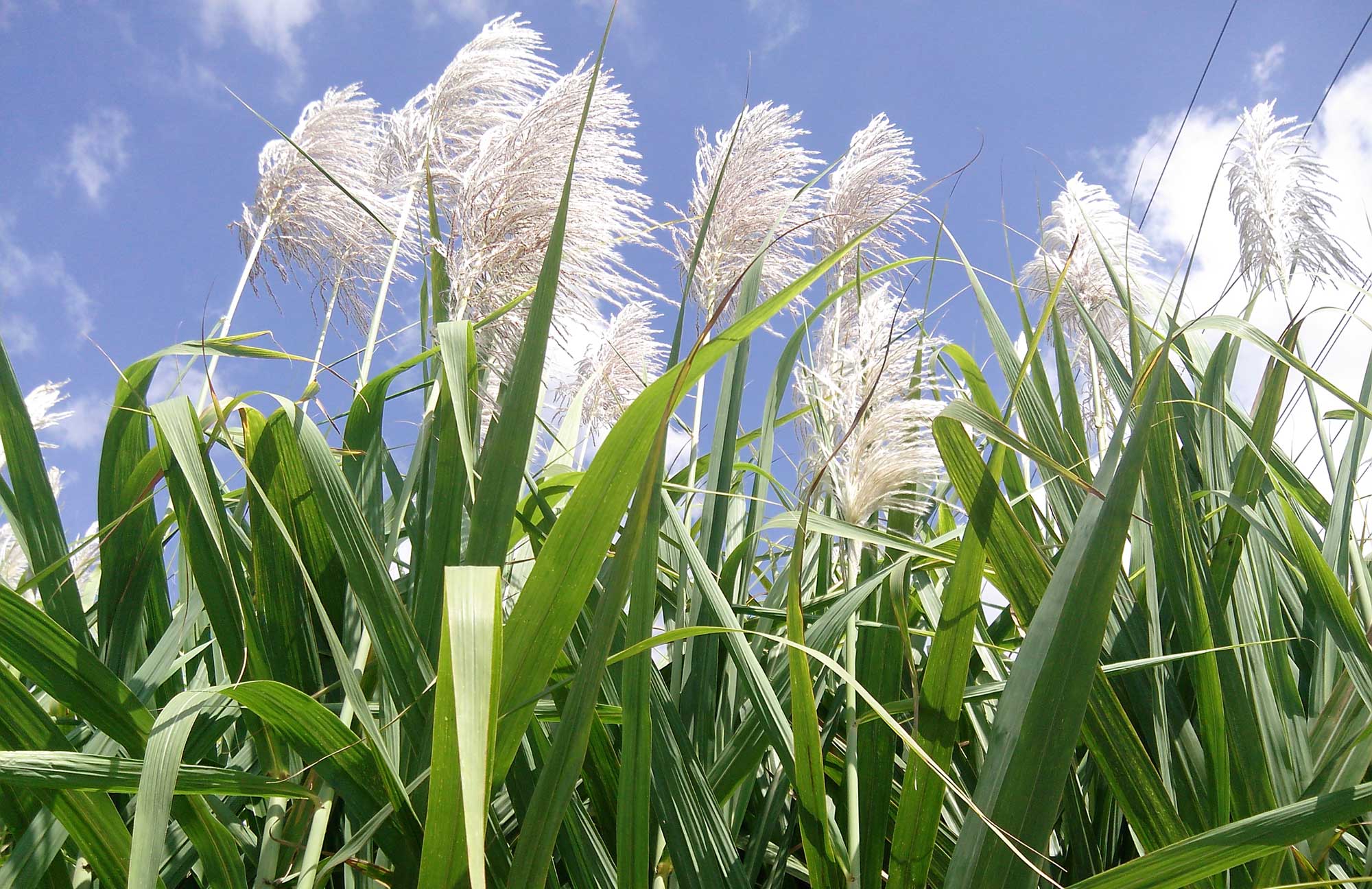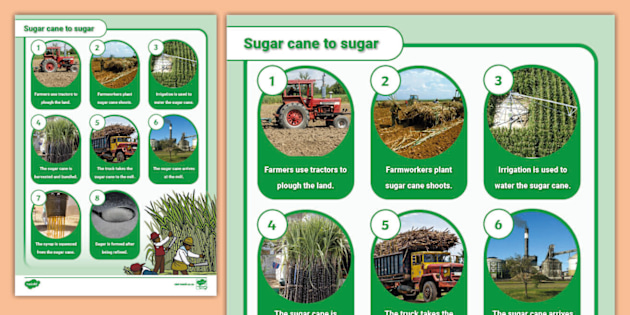Revealing the Significance of Sugar Canes: What Are Sugar Canes Made Use Of For in the Walking Stick Sugar Industry?
Sugar canes function as the keystone of the walking cane sugar industry, largely supplying the raw material required for sugar manufacturing. Their capability to transform sunlight into sucrose through photosynthesis is essential. Past their sweetening residential or commercial properties, sugar walking canes find energy in numerous cooking applications and arising markets. The complete degree of their influence expands beyond the kitchen area. This discussion will discover the multifaceted duties of sugar canes in both sector and economic climate.
The Duty of Sugar Canes in Sugar Manufacturing
Sugar walking canes serve as the foundational basic material in the walking stick sugar market, playing an important duty in the production procedure. These high, perennial yards flourish in exotic and subtropical climates, where they soak up sunlight and nutrients to produce sucrose. The harvesting of sugar walking canes usually happens when the plants get to maturation, maximizing their sugar content.Once gathered, the canes undergo crushing to draw out the juice, which has dissolved sugars. This juice is then clarified and focused through evaporation, transforming it into a syrup. Ultimately, crystallization occurs, permitting the separation of sugar crystals from the continuing to be syrup.The extracted sugar goes through further refining to accomplish the desired purity and high quality - What Are Sugar Canes Used For. Subsequently, the entire process highlights the necessary payment of sugar walking sticks to sugar production, underscoring their significance as both a basic material and a driver in the production of cane sugar
:max_bytes(150000):strip_icc()/SugarCanesSaccharumofficinarumNancyAyumi-26c9c80ee473464bbe322c83ecd9bfc1.jpg)
Diverse Applications in Food and Drink Market
In the food and beverage industry, sugar walking cane offers multiple crucial features. It acts not just as a primary sweetener in various products but also as a flavor representative that improves taste accounts. Furthermore, its elements play a considerable function in fermentation and distillation processes, adding to the production of liquors.
Sweetener in Products

The convenience of cane sugar as a sweetener makes it a staple in a wide array of food and beverage products. Widely made use of in baked goods, it improves the preference and structure of cakes, cookies, and pastries by offering dampness and promoting browning throughout baking. In drinks, cane sugar is a prominent option for sweetening juices, soft drinks, and teas, enabling a well balanced flavor profile. Additionally, it functions as a necessary active ingredient in dressings, sauces, and sauces, adding to an unified mix of tastes. Cane sugar's capability to liquify swiftly and its regular sweetness profile better solidify its function as a preferred sugar - What Are Sugar Canes Used For. Generally, its varied applications underscore the indispensable role of cane sugar in the culinary landscape
Seasoning Agent Usage
Using walking cane sugar as a flavoring agent expands beyond its role as a mere sweetener, improving a selection of cooking productions. In the food and drink market, it improves preference accounts by stabilizing acidity and resentment, making it an important part in dressings, sauces, and sauces. Additionally, walking cane sugar adds to the general mouthfeel, providing an enjoyable appearance in baked goods and confections. Its caramelization during cooking includes depth to both sweet and savory recipes, while additionally acting as a preservative in jams and jellies. In beverages, walking stick sugar is utilized to enhance tastes in mixed drinks and soft drinks, ensuring a much more enjoyable alcohol consumption experience. This adaptability underscores its importance in diverse culinary applications.
Fermentation and Distillation
Walking cane sugar plays a significant duty in fermentation and purification procedures, which are essential in producing a variety of liquors and food products. During fermentation, yeast converts sugars into alcohol and carbon dioxide, an essential action in crafting drinks like rum and vodka. Purification even more cleanses these alcoholic blends, concentrating tastes and boosting alcohol material. Beyond beverages, walking cane sugar is also indispensable in producing vinegar and certain food ingredients through fermentation. The convenience of walking stick sugar improves the taste accounts and high quality of these items, making it vital in the food and drink industry. Its contribution not only supports typical approaches however likewise cultivates advancement in crafting new tastes and experiences for customers.
Sugar Canes in Biofuel Manufacturing
As passion in sustainable energy sources grows, sugar walking canes are significantly identified for their potential in biofuel production. The biomass obtained from sugar walking sticks can be changed right into ethanol, a lasting fuel alternative that decreases greenhouse gas emissions compared to nonrenewable fuel sources. This process commonly entails fermenting the sugar extracted from the cane, which is then distilled to produce high-purity ethanol suitable for usage in vehicles.Additionally, sugar walking stick bagasse, the fibrous residue left after juice removal, can be utilized as a feedstock for bioenergy. It can be melted to create heavy steam and power, adding to power self-sufficiency in sugar mills. Countries such as Brazil have actually efficiently integrated sugar cane biofuel into their power policies, resulting in decreased reliance on imported fuels - What Are Sugar Canes Used For. Overall, sugar canes stand for an encouraging method for biofuel production, lining up agricultural exercise with ecological sustainability goals
Industrial Uses of Sugar Canes
While commonly acknowledged mostly for sugar production, sugar canes likewise have diverse commercial applications that prolong well beyond the food field. The coarse results of sugar walking stick, known as bagasse, function as an important resource in numerous markets. Bagasse is commonly utilized as a biofuel, producing power in sugar mills and other centers. Furthermore, it can be refined into paper, cardboard, and biodegradable products, promoting lasting practices.In enhancement, sugar walking sticks add to the manufacturing of molasses, a byproduct used in the fermentation process for producing alcohol and yeast. This versatility makes sugar walking canes important to the beverage and pharmaceutical sectors. Sugar cane essences are used in the cosmetics field, offering all-natural ingredients for skin care and elegance products. On the whole, the industrial uses sugar walking canes highlight their importance past sugar, showcasing their duty in advertising sustainability and sustaining different sectors.
Economic Impact of Sugar Walking Cane Farming
The financial impact of sugar cane cultivation is significant, mostly via job development and export revenue generation. This industry not only gives work chances in country locations but additionally contributes significantly to national economic climates by means of exports. Recognizing these elements highlights the important function sugar walking stick you could check here plays in both international and neighborhood markets.
Job Development Opportunities
Although frequently overlooked, the sugar cane sector plays an essential duty in work creation, greatly affecting local economic climates. The farming, harvesting, and processing of sugar walking stick produce navigate to this site countless employment possibility, from area employees to manufacturing facility personnel. In numerous regions, these work supply source of incomes for thousands of households, adding to neighborhood stability and growth. Additionally, ancillary sectors such as transport, tools manufacturing, and retail advantage from the sugar walking stick industry, further expanding work options. Seasonal job during planting and harvest also sustains temporary positions, allowing workers to gain earnings in otherwise lean periods. On the whole, the sugar cane industry acts as an essential economic engine, fostering task development and enhancing the top quality of life for many people and communities.
Export Profits Generation

Lasting Practices in Sugar Walking Stick Farming
While standard sugar cane farming practices have commonly caused ecological destruction, an expanding variety of farmers are taking on sustainable techniques that prioritize eco-friendly equilibrium. These techniques consist of crop rotation, which enhances soil fertility and decreases parasite episodes, and the usage of natural fertilizers to decrease chemical runoff. In addition, some farmers are applying integrated parasite monitoring methods, which focus on making use of click over here now all-natural killers and biopesticides instead of hazardous chemicals.Water conservation techniques, such as drip watering, are likewise getting grip, enabling efficient water use while preserving plant health and wellness. Additionally, numerous farmers are purchasing renewable resource resources, such as biomass from sugar walking stick waste, to power procedures and lower their carbon impact. These lasting techniques not just secure communities but additionally improve the long-term practicality of sugar walking stick farming, making sure that it can remain to satisfy global sugar needs while lessening environmental impact.
Often Asked Inquiries
Just How Are Sugar Canes Harvested and Processed?
Sugar walking sticks are harvested using mechanical cutters or hand-operated methods, then transported to factories. There, they undertake washing, crushing, and extraction procedures to get juice, which is then clarified, evaporated, and crystallized into sugar.
What Is the Nutritional Worth of Sugar Walking Cane?
The dietary worth of sugar walking cane includes carbohydrates, mostly in the kind of sucrose, together with trace quantities of nutrients like calcium and potassium. It is low in protein and fat content overall.
Can Sugar Walking Cane Be Expanded in Non-Tropical Areas?
Sugar walking cane can be expanded in non-tropical regions, but it needs details conditions such as appropriate warmth, dampness, and appropriate dirt. Adaptation and cultivation techniques are vital for effective development outside traditional tropical climates.

What Insects and Conditions Affect Sugar Cane Crops?
Illness and bugs significantly influence sugar walking cane plants. Usual threats include the sugarcane borer, red rot, and mosaic infection, which can lower return and high quality, demanding effective administration practices to protect these crucial agricultural resources.
Exactly How Does Sugar Walking Stick Farming Impact Citizen Communities?
Sugar cane farming significantly effects regional communities by giving employment possibility, promoting financial development, and supporting regional organizations. It can additionally lead to social difficulties and ecological concerns, impacting area health and wellness and sustainability. Sugar walking canes offer as the foundation of the cane sugar industry, mostly providing the raw material required for sugar production. Sugar canes offer as the fundamental raw product in the walking cane sugar industry, playing a crucial role in the production procedure. The harvesting of sugar canes usually takes place when the plants reach maturation, optimizing their sugar content.Once collected, the walking canes undergo crushing to draw out the juice, which consists of dissolved sugars. While commonly recognized mainly for sugar manufacturing, sugar canes likewise have diverse industrial applications that prolong well past the food sector. As international need for sugar continues to increase, nations abundant in sugar cane resources take advantage of on this opportunity, exporting raw sugar and refined products to international markets.